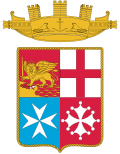 Orsa Maggiore at Cádiz, Spain in 2008 | |
| History | |
|---|---|
| Name | Orsa Maggiore |
| Operator | Italian Navy |
| Builder | Cantiere Navale Tencara Porto Marghera, Venice, Italy |
| Laid down | November 1993 [1] |
| Launched | November 1994 |
| Commissioned | 28 November 1995 |
| In service | 1 |
| Homeport | La Spezia |
| Identification |
|
| Motto | Ad maiora duco |
| Status | in service |
| General characteristics | |
| Type | ketch |
| Tonnage | 80 t (79 long tons) full load |
| Length | 28.3 m (92 ft 10 in) LOA |
| Beam | 6.5 m (21 ft 4 in) |
| Draught | 4.5 m (14 ft 9 in) |
| Sail plan |
|
| Speed | 8.0 knots (14.8 km/h; 9.2 mph) |
| Endurance | 2,200 nmi (4,100 km; 2,500 mi) on 7.0 knots (13.0 km/h; 8.1 mph) (with engine prop) |
| Complement | 22 |
| Notes |
|
Orsa Maggiore is an ocean ketch, serving as a sail training vessel for the Italian Navy. [3] It is an oceanic yacht racing armed[ clarification needed ] as ketch of the Italian Navy's sail section.
